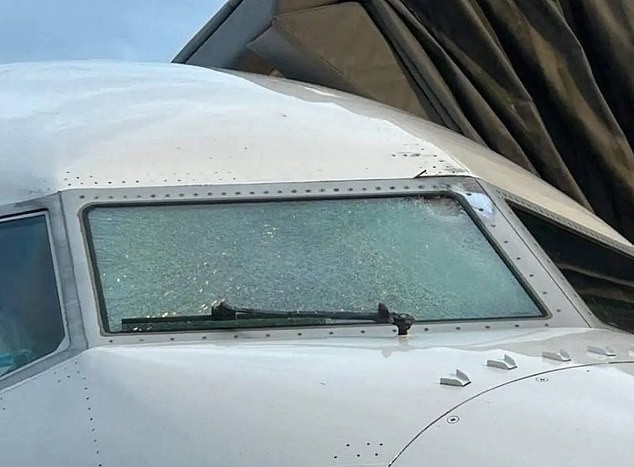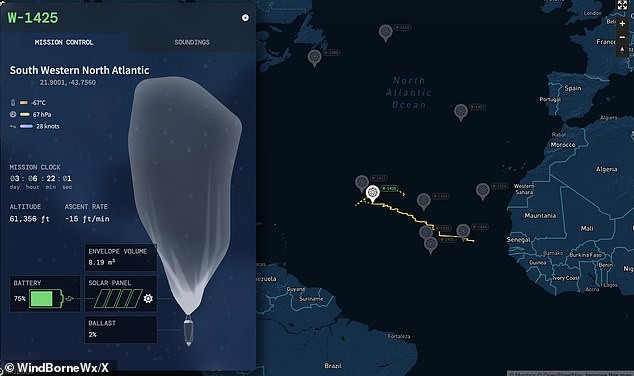Weather Balloon at 11,000 Meters Shatters United Flight Windshield
An investigation into the unexplained object that shattered the windshield of a United Airlines jet has confirmed that the culprit was a weather balloon. The collision on October 18 forced the Boeing 737 MAX to make an emergency landing near Moab, Utah. WindBorne Systems previously said it believed one of its weather balloons struck and cracked the windshield of United Flight 1093 as it cruised at approximately 11,000 meters.

In This Article:
NTSB Confirms Balloon Path and Flight Details
The National Transportation Safety Board has confirmed the WindBorne balloon’s path was consistent with the United jet. The balloon had departed Spokane, Washington, the previous day, passing over Oregon and Nevada, before eventually flying into airspace above Utah. The impact showered the pilots with glass shards. The captain sustained multiple superficial lacerations to his right arm; the first officer was not injured. The captain said he noticed a distant object on the horizon but did not have time to mention it to his colleague before there was a significant impact to the windshield and a loud bang. The pilots of a United Airlines jet cruising at approximately 11,000 meters were struck by a weather balloon during their flight near Moab, Utah. Photos showed cuts on the pilot’s arm. The NTSB said the radar track for the WindBorne long-duration, high-altitude weather balloon was consistent with the path of the United jet. The flight departed Denver with 112 passengers and crew. The captain declared an emergency and diverted safely to Salt Lake City. Passengers were transported on another aircraft to Los Angeles later that day.

WindBorne Responds and Safety Measures
WindBorne, a California-based start-up dedicated to advanced weather forecasting and atmospheric data collection, believes it was one of its own balloons that collided with the jet. The NTSB said the radar track for the WindBorne long-duration balloon was consistent with the United jet.

Context, Reactions and Aftermath
There were initial concerns the damage could have been caused by space debris. Prior government studies have suggested a very small risk of debris striking jets in flight. Airplane windshields are multi-layered to prevent a loss of cabin pressure if damaged in flight. The NTSB said the flight departed Denver with 112 passengers and crew. The captain declared an emergency and diverted safely to Salt Lake City. Passengers were transported on another aircraft to Los Angeles later that day. The collision left a significant amount of damage on the windshield. The captain posted a photo showing his arm covered in cuts following the shattered windshield. Glass from the windshield could be seen scattered all across the plane’s center console. The balloon had departed Spokane, Washington, the previous day, passing over Oregon and Nevada, before eventually flying into airspace above Utah. The United Airlines flight made an emergency landing after being struck by a mystery object over Utah. WindBorne has conducted more than 4,000 launches and files a notice with the Federal Aviation Administration for every launch. Speaking to Ars Technica, Kai Marshland, co-founder of WindBorne, said: 'I think this was a WindBorne balloon. We learned about UA1093 and the potential that it was related to one of our balloons at 11 pm PT on Sunday and immediately looked into it. 'At 6am PT, we sent our preliminary investigation to both NTSB and FAA, and are working with both of them to investigate further.' The company said it has rolled out 'immediate' changes to 'minimise' the amount of the time their balloons spend between 30,000 and 40,000 feet in the air. WindBorne has 'implemented four additional safety measures to further reduce the possibility of any future aircraft-balloon interactions as well as mitigate harm should an impact occur again,' it said. The company also said it has cut the time spent in primary commercial altitude bands by approximately 50 percent across its fleet and is providing automated email reports every two hours for all balloons in certain areas.

